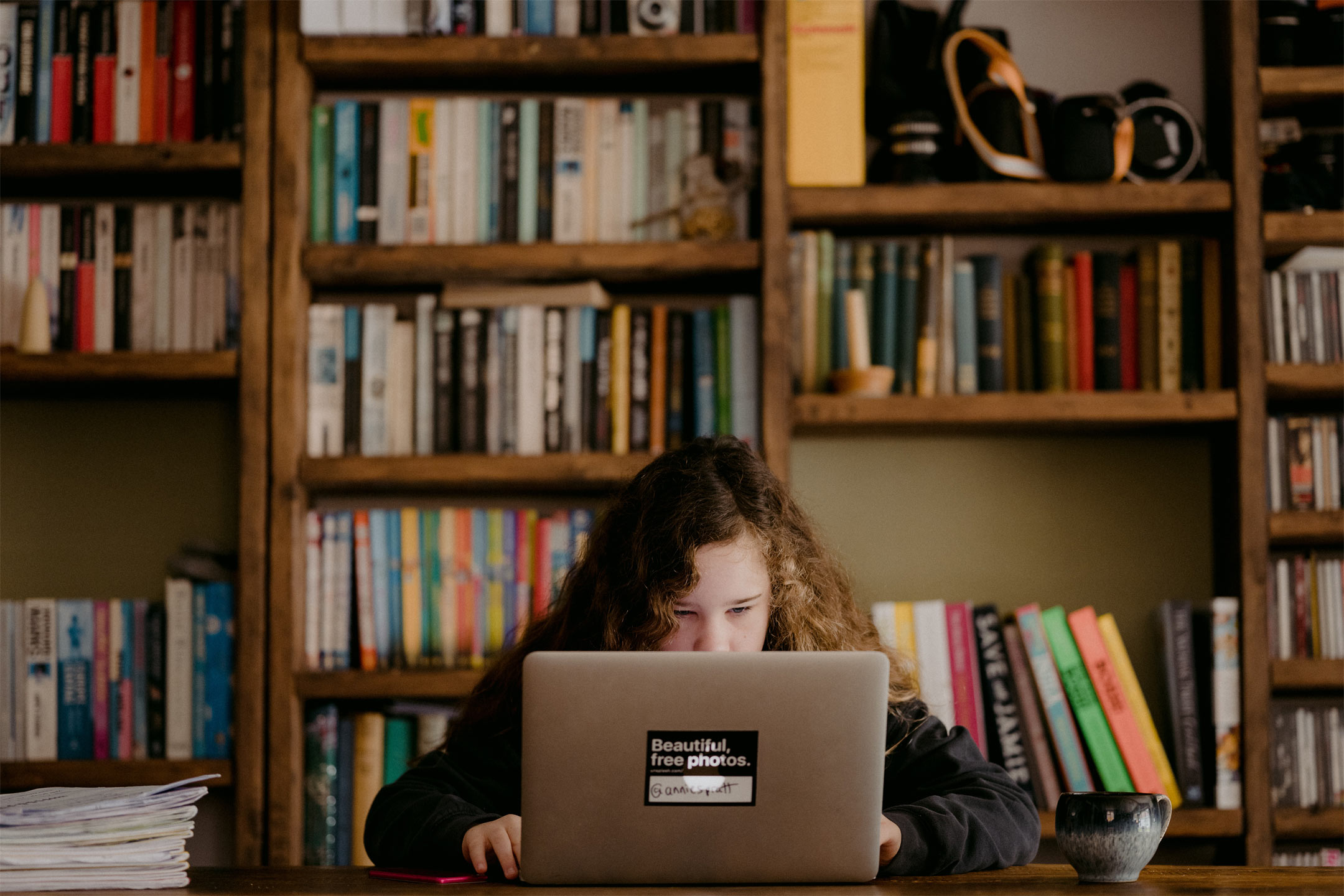
20 Mar Plagiarism has always been a problem: do you copy?
Taking information from the internet is de rigueur for today’s students. Now that many have to work from home under unusual conditions Klay Lamprell considers the weighty issue of plagiarism.
Information is at their fingertips. With just a few clicks of a keyboard, children can not only be linked to data, opinions and graphics on any topic, but they can flick that content into projects and assignments for school. With no concept of intellectual property, the habit of ‘borrowing’ from other people’s works without acknowledgement becomes entrenched. Many children unwittingly spend their entire school lives engaged in illegal, unethical activity – infringing on copyright laws, cheating authors and illustrators out of due credit and conning teachers about their abilities.
“Plagiarism has always been a problem, but the internet has made it much more possible,” said Helen Bateman of Limelight Press, a publisher of books for children. “There are two essential issues to consider, especially with regard to younger children. Firstly, it is difficult for them to be sure that the source is reliable. When a good publisher is putting a non-fiction book together there is an agreement with the writer that the work is his or her own, and the material is checked for accuracy by experts. With the internet, kids could be looking at a web page put up by a child their own age who has taken the material from an untrustworthy or outdated site. So there is the issue that content on the net is so easily transported and manipulated.
“The second issue is that even once the source is established as reliable, a child has to be able to determine the difference between common knowledge and someone else’s idea. Common knowledge is fact-based but even then the style of writing can be of a literary or theoretical nature. It’s a complex area, but the younger we start educating children about evaluating their sources and referencing their material, the better off they will be.”
 Helen Marsden from the University of South Australia, a specialist in educational integrity, agreed that plagiarism needs to be addressed in the early years. “There is now a strong awareness of plagiarism at the university level and we are putting a great deal of energy into dealing with it, but really all educational sectors need to pay attention,” says Marsden. “We see the continuum, from students who say they don’t know how to properly reference something because it wasn’t taught to them at school to students who have bought whole papers on the net.
Helen Marsden from the University of South Australia, a specialist in educational integrity, agreed that plagiarism needs to be addressed in the early years. “There is now a strong awareness of plagiarism at the university level and we are putting a great deal of energy into dealing with it, but really all educational sectors need to pay attention,” says Marsden. “We see the continuum, from students who say they don’t know how to properly reference something because it wasn’t taught to them at school to students who have bought whole papers on the net.
“The crux of the problem is that instruction in referencing and citing sources is still often quite loose and only introduced in late high school. The students tend to see it as something they need to do to pass, not as an issue of ethics. It would help if teachers would model proper procedure for children from the beginning. Even if they never have a formal discussion about plagiarism with their students, they can cite their sources every time they photocopy text from a book or print out a graphic from the internet. Kids absorb processes quickly if they are modelled.”
Marsden said that referencing sources is not the only concern. “It’s also about critical thinking. In the scientific arena, it’s accepted that there is rarely an original idea and that you will be building on other people’s work. You read the literature, acknowledge the source and then build on it or refute it. The scientific conventions are just as relevant for other disciplines and could be a valuable tool for kids in terms
of critical thinking.”
Some 70 per cent of high school and university students are found, through the use of plagiarism-detection software, to have plagiarised other people’s work. The software compares a student’s text to billions of internet pages and databases of journal articles and periodicals. It gives a percentage rating of how much of the text
matches. Teachers can then check that the matched text is correctly referenced.
“The effectiveness of this kind of software is not so much in catching students, but in making them aware that the school considers plagiarism a serious issue,” said Charmian Eckersley from the Network for Innovation in Teaching & Learning at the University of Newcastle. “It works as part of an overall approach that includes policies on plagiarism, clear guidelines on referencing sources and discussions on the ethics of using someone else’s ideas.”
Eckersley believes this multi-focused approach to plagiarism prevention has relevance for kids “even in primary schools, where you probably get almost 100 per cent plagiarism in information-based projects.
“For little kids especially, the difference between writing about their experiences, like being on holidays, to presenting factual information and someone else’s ideas is a surreptitious loss of creativity. It needs to be pointed out to them and discussed – how to use different types of sources, why one source might be more useful than another and how to acknowledge the work of others and continue to express their
own ideas.”
Eckersley said one of the most successful processes for stopping plagiarism and getting students to think critically is the use of outlines, research summaries and drafts. “One teacher I observed said he knew his students probably wouldn’t do as well at first using this method because it forced them into original trains of thought. It was worth the lower marks for a while for the kids – and their parents – to learn that it’s not just about producing work in the fastest time possible and copying text or graphics that you think will impress.
“I think another important approach is for teachers to get to know their students’ personal styles so they quickly see when a student’s work is not their own. Even from the early years, if you know how a child thinks and what they’re capable of, you can tell when they have simply copied something or when their parents have done the work. Teachers need to challenge students about this and not let it go.”
According to Steph Capra, co-author of Research Organiser 1 for Primary School Students, regurgitated research is often the result of a dull assignment task. “Homework and library tasks that set a problem to be solved and ask for a creative response reduce the opportunity for plagiarism,” said Capra. “If a child has to conduct research, synthesise that information with their existing knowledge and opinions and then provide an original solution, copying reams of information from a book or cutting and pasting from the net isn’t going to help.
“As an example, one of the preschools I worked with set a unit on frogs. The children and their teacher looked up information about the life cycle of frogs and their habitats, and they kept tadpoles which they watched grow into frogs. We then asked the children to work out where they could release the frogs in their school grounds. This is not information that is in a book. These four year olds had to take on board all the things they had learned not only from academic sources, but from watching the frogs and from an awareness of their own environment and they had to synthesise that information into an original response.
“This is problem-solving, high-order thinking. It can be used as a format in setting tasks all the way through the school years. It’s about taking a proactive approach to preventing plagiarism, instead of putting all this energy into stamping it out when they get to university level.”
What Is Plagiarism?
Copying, word for word, from someone else’s text without the use of quotation marks and without acknowledgement is plagiarism. Paraphrasing or summarising using the same wording as the original text, even with acknowledgement of the source, is plagiarism. See the examples below.
Original:
“Scales are hard pieces of skin, like fingernails, which cover the bodies of many creatures. Most scaly creatures, such as fish, snakes, lizards, turtles and crocodiles, are cold-blooded animals.” From Scaly Things by John Gambell.
Wrong:
In his book Scaly Things, John Gambell. says that scales are hard pieces of skin, like fingernails, which cover the bodies of many creatures. He says that most scaly creatures, such as fish, snakes, lizards, turtles and crocodiles, are cold-blooded animals.
Right:
In his book Scaly Things, John Gambell. says most animals that have cold blood, like fish, snakes and crocodiles, have scales. He says scales are as hard as human fingernails
Counter Plagiarism Strategy
Graham Taylor from Thebarton Senior College in South Australia has developed a 10-point system for teachers to use in preventing and managing plagiarism:
- Focus on question setting – Develop a focus on setting questions requiring higher-order thinking (and for which ready-made answers are unlikely to be available).
- Teach skills explicitly – Teach students research skills, such as how to analyse questions and break main tasks down into the sub-questions usually required to frame an answer.
- Make student thinking visible – Require students to develop concept maps and/or detailed outlines to plan their responses, and discuss this with them.
- Value the process as well as the product – Demonstrate that you value the process as well as the product by being explicit about processes. Show you are serious by awarding marks for research notes, developed outlines, drafts and proper referencing.
- Adopt a school-wide referencing system – Adopt a single referencing system that every student in every subject should understand and be expected to use.
- Consider the linguistic evidence – Increase your awareness of the linguistic markers that are the ‘smoking gun’ of plagiarism.
- Know your students and their abilities – Encourage the use of occasional tasks done in class under test conditions so you know what a student’s unaided writing is like.
- Develop ethical intelligence – Discuss the issues of plagiarism and intellectual property. Be concerned about the development of ethical intelligence and teach proper referencing so expectations are clear.
- Use search strategies to detect ‘borrowings’ – Have a range of search strategies available to help detect ‘borrowings’.
- Have strategies to discuss suspect pieces – If you do find a suspect piece, you need to approach the student strategically. The goal is to keep the student engaged in learning.
You can use this plagiarism-checker to check if words have been plagiarised




